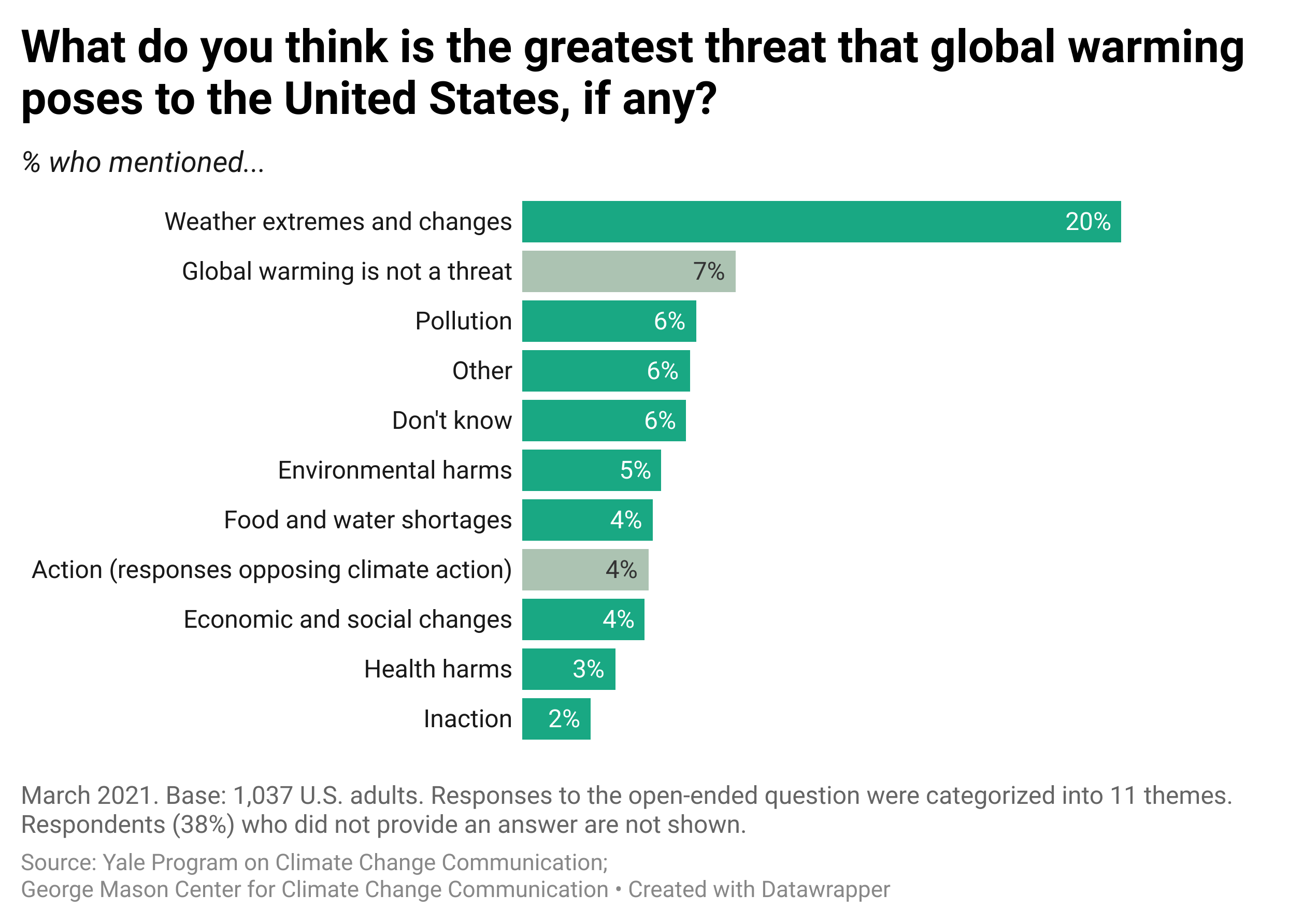Investigating The Threat: How Global Warming Could Unleash Deadly Fungi

Table of Contents
The Impact of Rising Temperatures on Fungal Growth
Optimal Conditions for Fungal Proliferation
Warmer temperatures significantly accelerate fungal growth and reproduction. The increased heat leads to several key changes:
- Increased metabolic rates: Fungi process nutrients and produce spores much faster in warmer conditions.
- Faster spore dispersal: Higher temperatures can enhance the dispersal of fungal spores through wind and other means, increasing the range of infection.
- Expanded geographical range: Many fungi are limited by temperature; as the planet warms, their habitable range expands, bringing them into contact with new potential hosts.
- Longer growing seasons: Extended periods of warmth allow fungi to thrive for longer durations, increasing their chances of infecting susceptible organisms.
For example, Coccidioides, a fungus causing Valley Fever, is expanding its geographic range due to rising temperatures and drought conditions in the southwestern United States. These environmental changes create more suitable habitats for the fungus, increasing the risk of infection for a larger population.
Weakened Immune Systems and Increased Susceptibility
Climate change not only fosters fungal growth but also weakens the immune systems of both humans and animals, making them more vulnerable to fungal infections. This vulnerability arises from several factors:
- Malnutrition: Climate change impacts food production, leading to malnutrition and weakened immunity in vulnerable populations.
- Dehydration: Increased frequency and intensity of heatwaves contribute to dehydration, impairing immune function.
- Increased exposure to pollutants: Climate change exacerbates air pollution, which can compromise the immune system and increase susceptibility to infections.
- Pre-existing health conditions: Heat stress can worsen existing health conditions, further weakening the immune response.
Climate-related disasters, such as floods and droughts, often lead to a surge in fungal infections. Disruptions to sanitation and healthcare infrastructure, coupled with weakened immunity in affected populations, create a perfect storm for the spread of fungal diseases.
Emerging Fungal Pathogens and Their Threat to Public Health
Examples of Deadly Fungi
Several fungi are exhibiting heightened virulence due to climate change. Some of the most concerning include:
- Candida auris: This fungus is highly resistant to antifungal drugs and poses a significant threat to individuals with compromised immune systems.
- Aspergillus fumigatus: This fungus causes aspergillosis, a serious infection affecting the lungs and other organs. Warmer temperatures may expand its range and increase infection rates.
- Coccidioides species: As mentioned earlier, these fungi are expanding their geographic range due to changing climate conditions, leading to a rise in Valley Fever cases.
Infections caused by these fungi can be severe, leading to high mortality rates and significant challenges in treatment due to antifungal resistance.
The Spread of Fungal Diseases
Global warming is facilitating the geographic expansion of fungal diseases, impacting regions previously unaffected. This spread is driven by:
- Changes in wind patterns: Altered wind currents can carry fungal spores over longer distances, introducing them to new environments.
- Increased rainfall: Higher rainfall can create favorable conditions for fungal growth in previously dry areas.
- Altered agricultural practices: Climate change impacts agricultural practices, potentially increasing the exposure of humans and animals to fungal pathogens.
The expansion of fungal diseases threatens biodiversity by disrupting ecosystems and causing significant harm to plant and animal populations. The emergence of novel fungal-host relationships further complicates the situation, creating new challenges for disease management.
Mitigation and Adaptation Strategies
Reducing Greenhouse Gas Emissions
The most effective way to reduce the risk of deadly fungal outbreaks is to mitigate climate change by reducing greenhouse gas emissions. This requires a global effort focused on:
- Transition to renewable energy sources: Shifting away from fossil fuels to renewable energy is crucial in reducing carbon emissions.
- Sustainable agriculture: Implementing sustainable agricultural practices can reduce greenhouse gas emissions from this sector.
- Improved waste management: Reducing waste and improving waste management can minimize methane emissions.
These actions are not merely environmental measures; they are essential steps in slowing the warming trend, thus hindering the proliferation of fungi.
Developing Early Warning Systems and Treatment Strategies
Proactive measures are crucial in combating the threat of deadly fungi. This involves:
- Improved surveillance systems: Establishing robust surveillance systems to monitor the emergence and spread of fungal pathogens.
- Development of antifungal drugs: Research and development of new antifungal drugs to combat drug-resistant fungi are vital.
- Public health education campaigns: Educating the public about the risks associated with fungal infections and preventive measures.
International collaboration and research are critical to addressing this emerging public health crisis. Early warning systems, coupled with effective treatment strategies, are essential to minimize the impact of deadly fungal infections exacerbated by global warming.
Conclusion
The connection between global warming and the emergence of deadly fungi is undeniable. Rising temperatures and changing environmental conditions create a breeding ground for pathogenic fungi, increasing the risk of severe and potentially fatal infections. Addressing this threat requires a multifaceted approach, encompassing aggressive mitigation of climate change, the development of robust early warning systems, and the advancement of effective treatment strategies. Ignoring the threat posed by global warming and its impact on fungal diseases is not an option. We must act decisively to investigate and mitigate the potential unleashing of deadly fungi before it becomes a widespread global catastrophe. Let's continue to investigate and understand the threat of deadly fungi exacerbated by global warming and take proactive steps to protect ourselves and our planet.

Featured Posts
-
 Naomi Campbell And Anna Wintours Feud The Met Gala 2025 Fallout
May 25, 2025
Naomi Campbell And Anna Wintours Feud The Met Gala 2025 Fallout
May 25, 2025 -
 Hells Angels Unveiling The Truth
May 25, 2025
Hells Angels Unveiling The Truth
May 25, 2025 -
 Will Mercedes Re Sign George Russell The Crucial Scenario
May 25, 2025
Will Mercedes Re Sign George Russell The Crucial Scenario
May 25, 2025 -
 Amundi Msci World Ii Ucits Etf Usd Hedged Dist A Guide To Nav And Its Implications
May 25, 2025
Amundi Msci World Ii Ucits Etf Usd Hedged Dist A Guide To Nav And Its Implications
May 25, 2025 -
 Deconstructing The Hells Angels
May 25, 2025
Deconstructing The Hells Angels
May 25, 2025
Latest Posts
-
 23 Marzo 2024 Almanacco Santo Del Giorno Compleanni E Proverbio
May 27, 2025
23 Marzo 2024 Almanacco Santo Del Giorno Compleanni E Proverbio
May 27, 2025 -
 Domenica 23 Marzo Almanacco Eventi Storici Compleanni E Proverbio
May 27, 2025
Domenica 23 Marzo Almanacco Eventi Storici Compleanni E Proverbio
May 27, 2025 -
 Il Giorno 10 Marzo Almanacco Storia Compleanni E Tradizioni
May 27, 2025
Il Giorno 10 Marzo Almanacco Storia Compleanni E Tradizioni
May 27, 2025 -
 Punxsutawney Phils Childs First Birthday Celebration
May 27, 2025
Punxsutawney Phils Childs First Birthday Celebration
May 27, 2025 -
 Punxsutawney Phils Family Celebrates First Birthday
May 27, 2025
Punxsutawney Phils Family Celebrates First Birthday
May 27, 2025
